Hugo, an enchantment from Martin Scorsese, is the 3D children’s movie that you might expect from the director of Raging Bull and Goodfellas. It’s serious, beautiful, wise to the absurdity of life and in the embrace of a piercing longing. No one gets clubbed to death, but shadows loom, and a ferocious Doberman nearly lands in your lap. The movie is based on the book The Invention of Hugo Cabret, but is also very much an expression of the filmmaker’s movie love. Surely the name of its author, Brian Selznick, caught his eye: Selznick is related to David Selznick, the producer of Gone With the Wind — kismet for a cinematic inventor like Scorsese.
Scorsese’s fidelity to Selznick’s original story is very nearly complete, though this is also, emphatically, his own work. Gracefully adapted by John Logan, the movie involves a lonely, melancholic orphan, Hugo (Asa Butterfield), who in the early 1930s tends all the clocks in a Parisian train station. Seemingly abandoned by his uncle, the station’s official timekeeper (Ray Winstone), Hugo lives alone, deep in the station’s interior, in a dark, dusty, secret apartment that was built for employees. There, amid clocks, gears, pulleys, jars and purloined toys, he putters and sleeps and naturally dreams, mostly of fixing a delicate automaton that his dead father, a clockmaker (Jude Law), found once upon a time. The automaton is all that remains of a happy past.
Hugo has been repairing the automaton with mechanical parts salvaged from the toys he has stolen from a toy store in the station. All that he needs now to bring the windup figure to life — it sits frozen, with a pen at the ready, as if waiting for inspiration — is the key that will open its heart-shaped lock. After assorted stops and starts and quick getaways, Hugo finds the key during an adventure involving the toy-store owner and his goddaughter, Isabelle (Chloe Grace Moretz). A beloved, wanted child, she brings Hugo into her life, which is how he discovers that the cantankerous shopkeeper with the white goatee and sad, watchful eyes is Georges Melies (a touching Ben Kingsley).
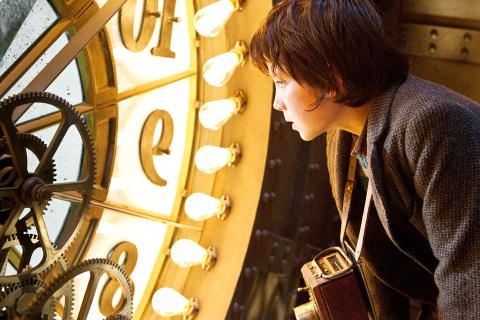
Photo Courtesy of GK Films
The name means nothing to Hugo and may not mean much to most contemporary viewers, but it means a great deal to this lovely movie. A magician turned moving-picture pioneer, Melies (1861 to 1938) began his new career after seeing one of the first public film projections in Paris on Dec. 28, 1895. Until then, early moving pictures had been commercially exhibited on Kinetoscopes, peephole machines that enabled viewers to watch brief films, one person at a time. The image was tiny — less than 5cm wide — and moving pictures didn’t become cinema as we know it until wizards like the French brothers Auguste and Louis Lumiere created machines like the cinematographe, which projected larger-than-life images on screens that people watched as an audience.
While the Lumieres dazzled with nonfiction films that they called actualites, Melies enthralled with fantasies and trick films like A Trip to the Moon (1902). In this comic 16-minute science-fiction masterwork, a gaggle of scientists in knee breeches fly in a rocket to the Moon, where they encounter acrobatic creatures with lobster claws amid puffs of smoke and clever cinematic sleights of hand. In the film’s most famous image, the rocket lands splat in the eye of the Man in the Moon, causing him to squeeze out a fat tear. It was perhaps a prophetic image for Melies, who, after falling out of fashion and into obscurity, ran a toy store in the Montparnasse station in Paris, which is where he was later rediscovered.
Selznick opens and closes his book with some soft pencil drawings of Earth’s Moon, that luminous disk on which so many human fantasies (the Man in the Moon included) have been projected. In the book the Moon is something of a screen against which Melies’ most celebrated cinematic fantasy unfolds. Scorsese doesn’t exploit this lunar metaphor (perhaps he believes the Moon belongs to Melies), yet he locates plenty of cinematic poetry here, particularly in the clock imagery, which comes to represent moviemaking itself. The secret is in the clockwork, Hugo’s father says to him in flashback, sounding like an auteurist. Time counts in Hugo, yes, but what matters more is that clocks are wound and oiled so that their numerous parts work together as one.
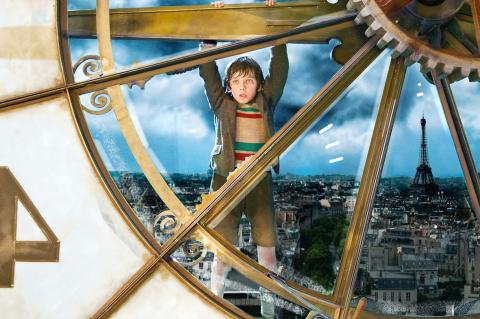
Photo Courtesy of GK Films
The movie itself is a well-lubricated machine, a trick entertainment and a wind-up toy, and it springs to life instantly in a series of sweeping opening aerial shots that plunge you into the choreographed bustle of the train station. The first time you see Hugo he’s peering out from behind a large wall clock at the human comedy in the station. He’s staring through a cutout in the clock face, an aperture through which he watches several characters who play supporting roles in a spectacle that is by turns slapstick, mystery, melodrama and romance, including the menacing station inspector (Sacha Baron Cohen), a friendly flower vendor (Emily Mortimer), a woman with a dachshund (Frances de la Tour) and her suitor (Richard Griffiths). When Hugo gazes at them, he’s viewer and director both.
So much happens in this initial whoosh that it feels as if you’d hitched a ride on a rocket too. After the camera divebombs through the station, it follows Hugo as he speeds down halls, a ladder, a chute, a staircase and yet more halls, bringing to mind a Busby Berkeley set and Henry Hill’s long walk into the nightclub in Goodfellas. The camera keeps moving, as does Hugo, who, chased by the station master and his Doberman, sprints past James Joyce and Django Reinhardt lookalikes. It’s Paris of the modernist imagination, though really it’s movieland, where gears loom like those in Modern Times and a man who’s part machine oils his bits like the Tin Man (while longing for a heart).
Scorsese caps this busy introductory section with Hugo looking wistfully at the world from a window high in the station. The image mirrors a stunning shot in his film Kundun, in which the young, isolated Dalai Lama looks out across the city, and it also evokes Scorsese’s well-known recollections about being an asthmatic child who watched life from windows — windows that of course put a frame around the world. This is a story shared by all children, who begin as observers and turn (if all goes well) into participants. But Hugo is specifically about those observers of life who, perhaps out of loneliness and with desire, explore reality through its moving images, which is why it’s also about the creation of a cinematic imagination — Hugo’s, Melies’, Scorsese’s, ours.
Hugo is the tale of a boy, one of fiction’s sentimental orphans, and the world he invents, yet, unsurprisingly, its most heartfelt passages are about Melies. The old filmmaker is as broken and in need of revival as the automaton, and while you can guess what happens, it’s the getting there — how the clock is wound — that surprises and often delights. Waves of melancholy wash over the story and keep the treacle at bay, as do the spasms of broad comedy, much of it nimbly executed by Baron Cohen. There is something poignant and paradoxical about Scorsese’s honoring a film pioneer in digital (and in 3D, no less), yet these moving pictures belong to the same land of dreams that Melies once explored, left for a time and entered once again through the love of the audience.
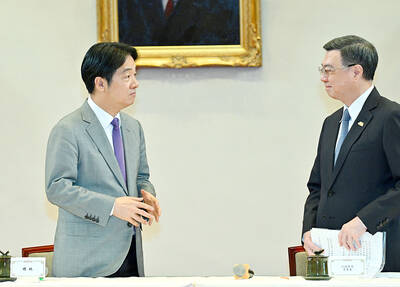
Under pressure, President William Lai (賴清德) has enacted his first cabinet reshuffle. Whether it will be enough to staunch the bleeding remains to be seen. Cabinet members in the Executive Yuan almost always end up as sacrificial lambs, especially those appointed early in a president’s term. When presidents are under pressure, the cabinet is reshuffled. This is not unique to any party or president; this is the custom. This is the case in many democracies, especially parliamentary ones. In Taiwan, constitutionally the president presides over the heads of the five branches of government, each of which is confusingly translated as “president”
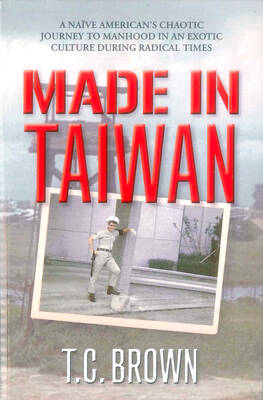
By 1971, heroin and opium use among US troops fighting in Vietnam had reached epidemic proportions, with 42 percent of American servicemen saying they’d tried opioids at least once and around 20 percent claiming some level of addiction, according to the US Department of Defense. Though heroin use by US troops has been little discussed in the context of Taiwan, these and other drugs — produced in part by rogue Chinese Nationalist Party (KMT) armies then in Thailand and Myanmar — also spread to US military bases on the island, where soldiers were often stoned or high. American military policeman

An attempt to promote friendship between Japan and countries in Africa has transformed into a xenophobic row about migration after inaccurate media reports suggested the scheme would lead to a “flood of immigrants.” The controversy erupted after the Japan International Cooperation Agency, or JICA, said this month it had designated four Japanese cities as “Africa hometowns” for partner countries in Africa: Mozambique, Nigeria, Ghana and Tanzania. The program, announced at the end of an international conference on African development in Yokohama, will involve personnel exchanges and events to foster closer ties between the four regional Japanese cities — Imabari, Kisarazu, Sanjo and
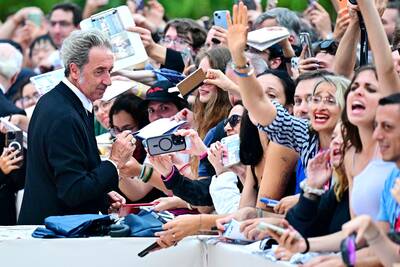
The Venice Film Festival kicked off with the world premiere of Paolo Sorrentino’s La Grazia Wednesday night on the Lido. The opening ceremony of the festival also saw Francis Ford Coppola presenting filmmaker Werner Herzog with a lifetime achievement prize. The 82nd edition of the glamorous international film festival is playing host to many Hollywood stars, including George Clooney, Julia Roberts and Dwayne Johnson, and famed auteurs, from Guillermo del Toro to Kathryn Bigelow, who all have films debuting over the next 10 days. The conflict in Gaza has also already been an everpresent topic both outside the festival’s walls, where